
Year in Review 2005–06: Part 1
July 2005
UW–Madison researchers receive a $20 million award for the second phase of a project that aims to deepen understanding of a variety of biological processes, including how the information in a gene is turned into a physical protein that does a cell’s work. Scientists say the studies could lead to the design of new drugs to control diseases, the development of blood substitutes and synthetic skin, and a better understanding of diseases such as Alzheimer’s or sickle-cell anemia.
Odd-numbered years continue to favor the Product Development Team in the food science department. As in 2003 and 2001, the student team captures first place in a national product development contest sponsored by the Institute of Food Technologists. This year’s team earns the top prize for “Healthy sTarts,” a granola cup coated with strawberry-flavored yogurt and topped with strawberries and blueberries.
Writing in the journal Science, a team of scientists lead by Tomas Prolla, professor of genetics, describes a series of experiments on mice that peel away some of the secrets of aging in mammals. Growing old, it seems, occurs as mutations build up in the DNA of mitochondria, structures that provide energy within cells to move, divide, contract and secrete products vital for the health of organisms. The new insights may one day lead to opportunities to stave off old age through drugs that could prevent the gathering of genetic defects in mitochondrial DNA.
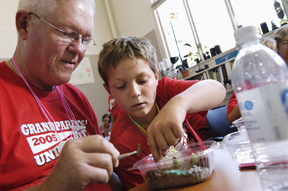
Learning together at Grandparents’ University.
For the fifth year, grandparents and their grandchildren can earn degrees in one of 12 “majors” — from astronomy to theatre — during Grandparents’ University on the UW–Madison campus. The event, which has become a model for other universities, draws participants from 21 states. Grandparents tell organizers that “being able to show grandchildren that adults can be excited about learning at any age” is one of the program’s rewards.
August 2005
Kevin McSweeney, a professor of soil science, becomes the new director of the Arboretum, a 1,260-acre green oasis in the heart of Madison. McSweeney will preside over the Arboretum’s administrative, fundraising and outreach activities, and he will remain involved in the center’s varied ecological research initiatives. The Arboretum will reach its 75th anniversary in June 2009.
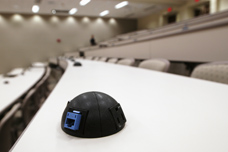
A wired classroom in Chamberlin Hall.
Chancellor John D. Wiley dedicates the newly renovated Chamberlin Hall during a two-day physics symposium. Built in the early 1900s, Chamberlin Hall was gutted for renovation in 2002; since then the building’s interior has been completely reconstructed to bring the facility up to modern standards for its new role as home to the physics department.
UW–Madison ranks eighth among the nation’s 50 top public universities in U.S. News and World Report’s “America’s Best Colleges.” The School of Business ranks 12th overall among the top business schools, moving up from 14th last year; the College of Engineering moves up to No. 12, after being ranked at 13 in 2005.
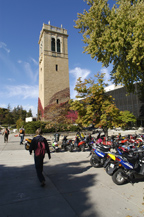
Scooting around campus.
Morton Ann Gernsbacher, the Vilas Research Professor and Sir Frederic C. Bartlett Professor of Psychology, becomes president of the American Psychological Society, the leading organization of academic psychologists in the United States devoted to scientific psychology and a powerful voice in advancing behavioral science research on Capitol Hill.
In response to the proliferation of scooters on campus, the university makes a six-fold increase in the number of parking spots for the two-wheelers, bringing the number of spots close to 700. Those new spots, as well as increased fines for parking outside them or for moving violations, aim to improve the coexistence of scooters with pedestrians on the bustling campus.
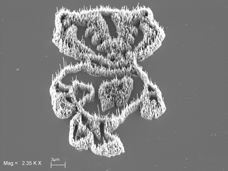
Researchers create NanoBucky.
A team of chemistry researchers puts a new twist on an old philosophical riddle: How many Bucky Badger mascots can you fit on the head of a pin? The answer: 9,000, with a little help from nanotechnology. NanoBucky, created in the lab of chemistry Professor Robert Hamers, is composed of tiny carbon nanofiber “hairs,” each just 75 nanometers in diameter. (A nanometer is equivalent to 1 billionth of a meter.) NanoBucky provides an entertaining illustration of the astounding scale at which nanotechnology pioneers work.
Joining other Big Ten and national research universities, UW–Madison takes steps to accommodate Wisconsin residents studying at colleges and universities closed by the catastrophic damage from Hurricane Katrina to help UW–Madison students who are from the damaged areas and those who have been called up to Wisconsin National Guard duty to join relief efforts.
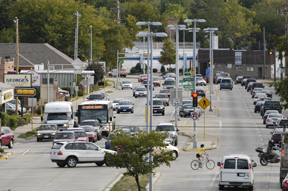
A new center explores transportation.
UW–Madison is designated as one of 10 National University Transportation Centers charged with advancing research on critical national transportation issues and expanding the workforce of transportation professionals. The U.S. Department of Transportation is providing $16 million over five years for the center’s work.
September 2005
UW–Madison is named the nation’s top research university in a new college guide by Washington Monthly that is outwardly focused on societal impact, emphasizing outcomes of university work such as public service, promoting social mobility and advancing the economy.
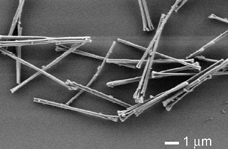
Studying applications at nanoscale.
The National Science Foundation awards the university’s Materials Research Science and Engineering Center nearly $14.8 million to continue its leading-edge research on the interfaces of materials at the nanoscale. The center’s work could have wide-ranging applications in electronics and biology, including the use of atomic-scale materials to direct the growth and differentiation of embryonic stem cells.
Taking a wide variety of lifelong learning classes gets easier for Madison-area residents ages 50 and over, as the Division of Continuing Studies and the Wisconsin Alumni Association are awarded a grant to establish an institute to expand and improve access to educational opportunities, place emphasis on learning for the joy of learning and offer seasoned adults intellectually stimulating classes for noncredit. Only 100 joint Osher Lifelong Learning Institutes will be created, and UW–Madison now makes No. 73 in the network.
The university adds a new degree program in neuroscience and public policy, recognizing that modern neuroscience is making significant gains in understanding the human brain and behavior, and that resulting knowledge can have profound implications for society. The new program will train students in ways to apply this knowledge to problems in public policy.